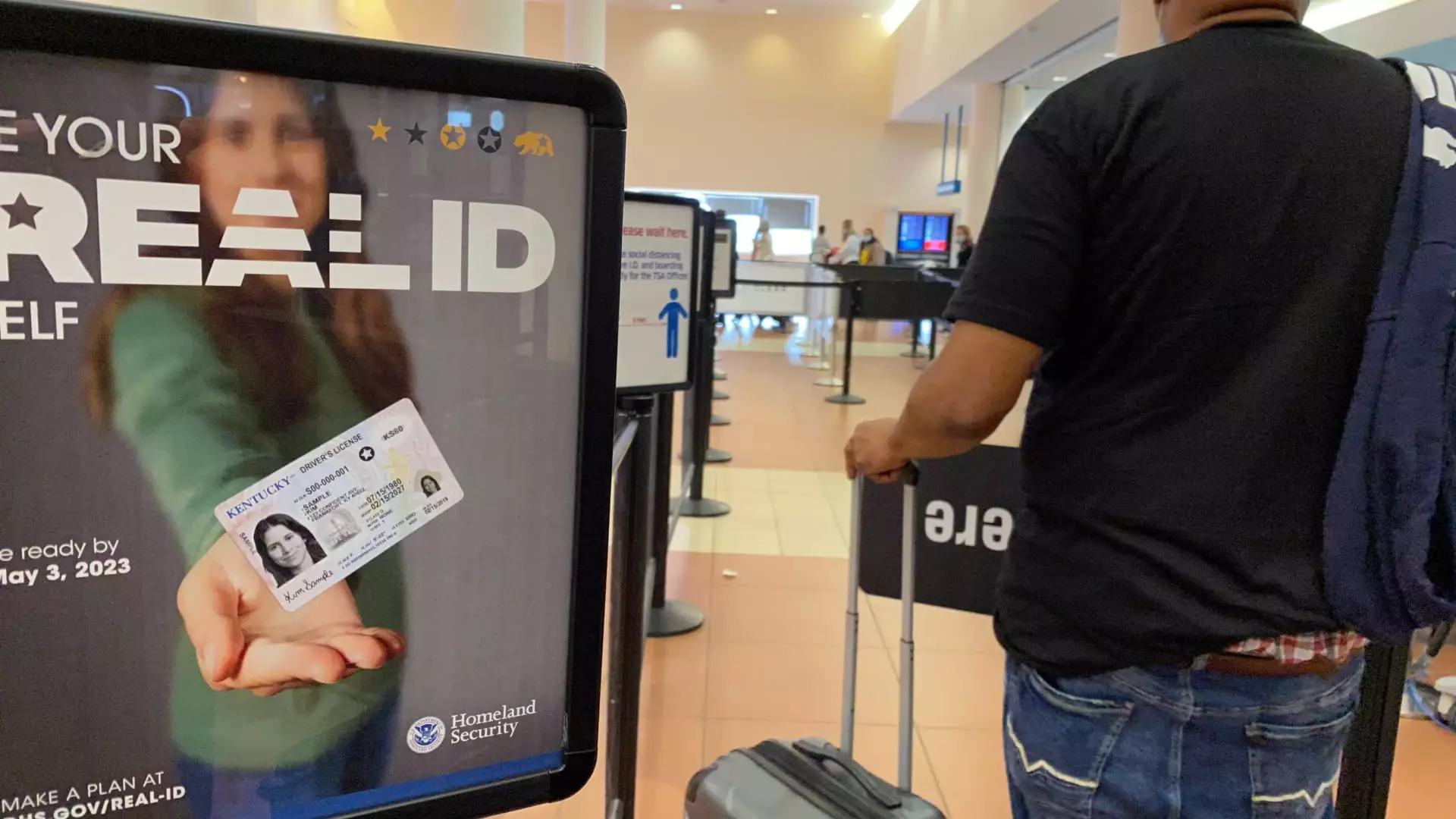As the federal government prepares to enforce Real ID requirements for domestic flights starting May 7, the repercussions for travelers are as serious as they are unsettling. While the Transportation Security Administration (TSA) claims that 81% of travelers are already compliant, the reality on the ground leaves many in a vulnerable position. This could be perceived as a bureaucratic attempt to tighten security, but is it merely a shortsighted, panicked response post-9/11? It’s time for travelers to wake up to the implications of this new policy and what it might mean for their future trips.
For more than a decade, the government has pushed the deadlines back repeatedly, leaving many to fall into a false sense of security. The undercurrent of recurring extensions has created an environment fraught with complacency, but the upcoming deadline suggests a firm, unyielding turn in policy that may catch many off guard. Are travelers ready to adapt to such stringent regulations, especially those who may only fly occasionally or for the sake of spontaneity?
Long Lines and Limited Appointments: A Recipe for Chaos
Many states are reporting an overwhelming demand for Real ID appointments, leading to long wait times and scarce availability. Routine visits to your local Department of Motor Vehicles (DMV)—once a mundane requirement—are now fraught with anxiety and urgency. Long queues and frantic travelers scrambling for appointments illustrate a severe disconnect between governmental policy and public readiness.
John Essig, the TSA’s federal security director for New York City-area airports, made it clear: “Make your appointments now as quick as possible.” Yet, for many, this is akin to shouting into a void. The irony is palpable; those unable to secure an appointment in time will face the fallout of being denied boarding due to a lack of compliance. Is it fair to penalize citizens for a system that hasn’t adapted to the increasing demand?
Signs of a Bureaucratic Monolith
One glaring issue with the Real ID rollout is the reliance on compliance and the erratic nature of government systems. Are we truly creating a safer travel experience, or merely a cumbersome, over-complicated process that increases anxiety and systemic inefficiencies? The government has long utilized the security narrative to justify increasingly invasive practices; however, the efficacy of such measures often seems overly reliant on outdated frameworks.
As travelers approach checkpoints, they’ve seen signage and announcements warning about the Real ID requirements. Yet, these reminders feel more symbolic than genuinely helpful. They don’t address the core issue: why is the system in place not more agile and responsive to the demands of the people it aims to serve? The looming threat of complications for those without acceptable IDs is a symptom of a broader ailment in governmental policy-making—a disconnection from the realities citizens face.
Real ID: The Price of Scrambling to Be Compliant
While some may argue that increased scrutiny and enhanced security measures are necessary consequences of past tragedies like 9/11, one must question the true cost of compliance. The inconvenience and potential financial burden on regular travelers who are forced to rush through ID upgrades feel like an unfair trade-off for the promise of safety.
Alternatives do exist, such as using a U.S. passport or a permanent resident card, but not all travelers possess these options, nor should they need to resort to such drastic measures. Why have we arrived at a point where civilian freedom is so tightly interwoven with compliance that travelers feel pressured to change their IDs hurriedly? What does this reveal about the trajectory of civil liberties in the name of security?
The Future of Travel in a Real ID World
With the TSA recommending an arrival time three hours ahead of domestic flights for non-compliant travelers, the narrative of ‘hassle-free travel’ is being flipped on its head. The Real ID system not only disrupts the joy of spontaneous travel; it exacerbates concerns around personal freedoms and state oversight. Passengers may soon dread their airport experiences, stripped of the leisurely anticipation that should accompany travel.
The Real ID mandate will likely reshape how Americans engage with air travel. If the government can impose this regulation with little regard for the chaos it may create, what’s to stop it from pushing even more rigid controls in the future? Travelers stand at a crossroads; they must question not merely how to comply with this new mandate but also how such policies will redefine their freedoms, liberties, and expectations in the realm of travel.

